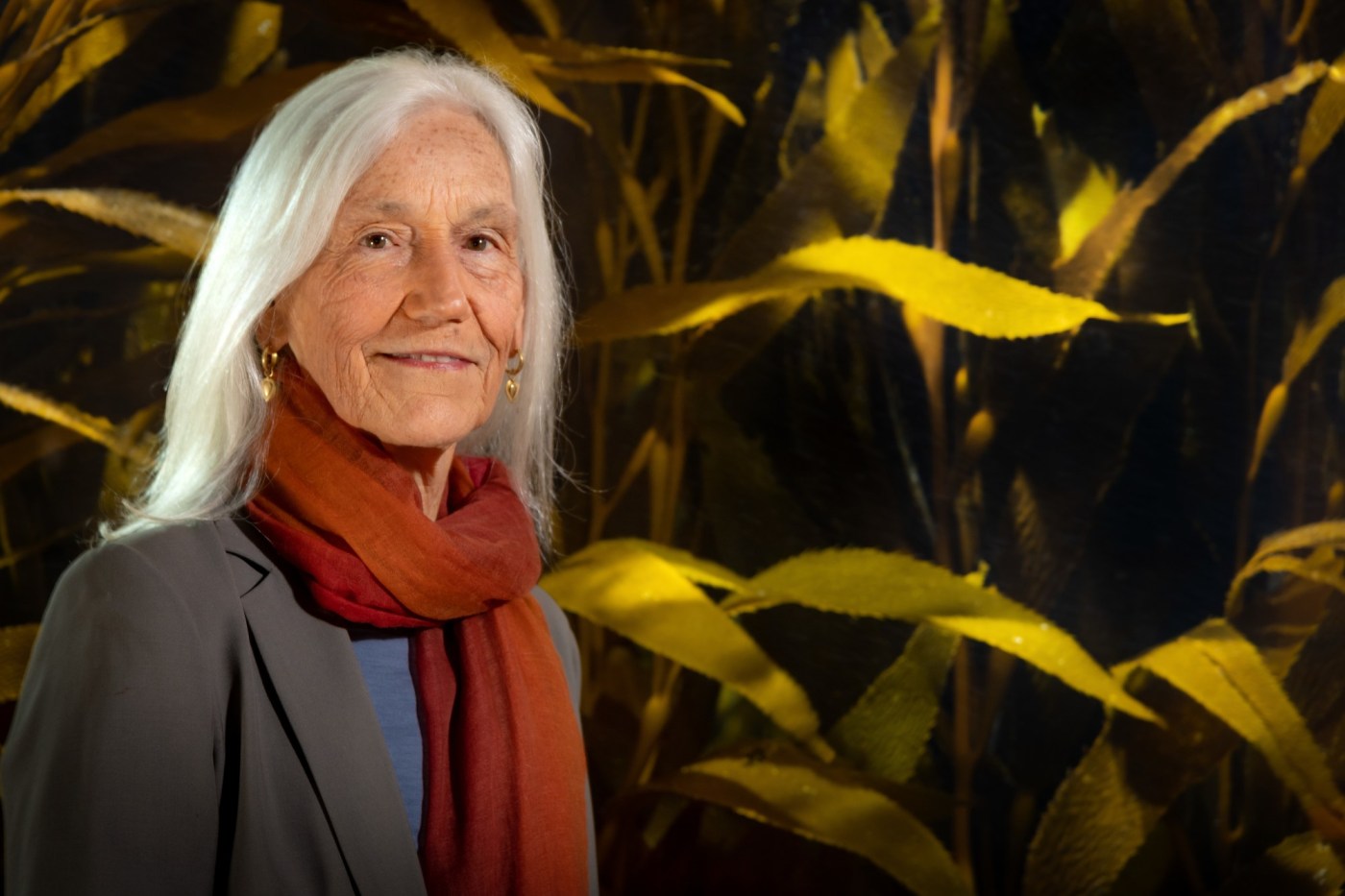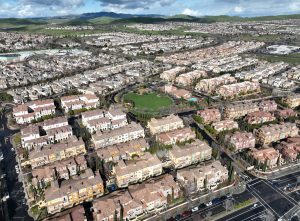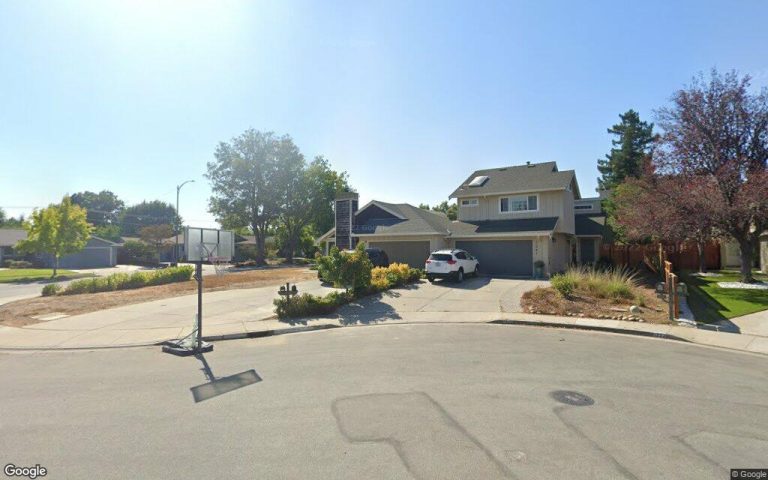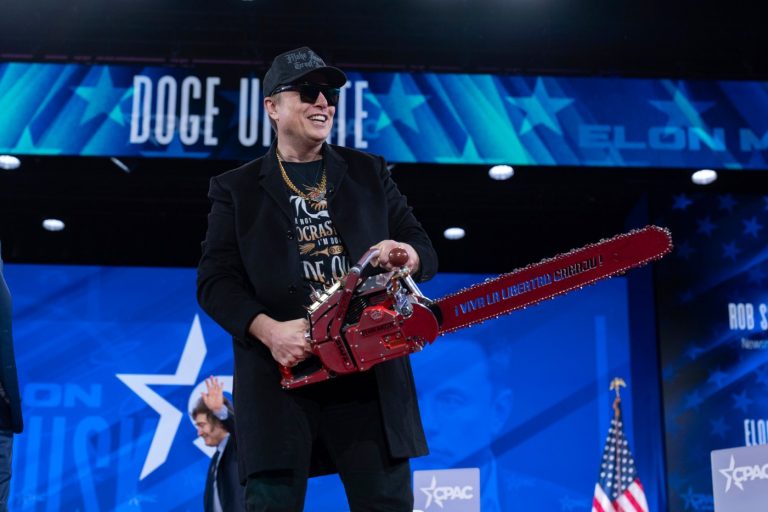Forty years ago, Silicon Valley pioneer David Packard, co-founder of Hewlett-Packard, his wife, Lucile, and their daughter Julie, a young marine biologist, cut the ribbon on a remarkable family project — a $55 million, state-of-the-art oceanfront aquarium constructed on the site of an old World War I-era sardine cannery on the Monterey waterfront.
Related Articles
‘Super pod’ of 1,500 dolphins captured on drone video as they cavort off Monterey coast
Moss Landing battery fire: Unusually high concentrations of toxic metals found in wetlands near plant
Moss Landing battery fire: Gov. Newsom calls for investigation into massive blaze
Julie Packard to step down as Monterey Bay Aquarium executive director
Elkhorn Slough researchers find sea otter population helps stop invasion of green crabs
Since then, the Monterey Bay Aquarium has exploded in popularity, drawing 2 million visitors a year, and changed the way aquariums around the world are designed. It has rescued sea otters, exhibited animals never seen before in U.S. aquariums, including great white sharks, advocated for environmental laws, and created a “Seafood Watch” program used by millions to make informed choices at the grocery store.
In January, Julie Packard announced she will step down by the end of the year as the only executive director the aquarium has ever known, while still remaining on its board.
Q: What did you expect when your family started the aquarium 40 years ago?
A: The concept was really about creating a place to tell natural history stories about Monterey Bay. How it has evolved over time has completely exceeded our wildest expectations. We had no idea that we would expand to have such a reach, such a big audience, and have such an impact on conservation, to be honest. It’s been super fun and exciting to see how the place has grown.
Q: I remember hearing that your father was skeptical about building an aquarium featuring kelp. Basically a museum for seaweed.
A: Anyone who dives recreationally knows that diving in the kelp forest is amazing. It’s like being in a cathedral. It’s so beautiful and so inspiring. We wanted to try to recreate that. In the beginning, most people were very skeptical. Early on we did a focus group and I remember one guy said something like, “Kelp? Nothing lives in it.”
Q: How has the aquarium’s message to the public evolved?
A: Over time, scientists have realized there were a lot of impacts — negative human impacts — that have been happening in the ocean generally and even here. So we started evolving our message to focus more on including humans as part of the story. More specifically, what are the conservation stories that we need to be telling people about?
Q: You’ve endorsed environmental legislation and ballot measures.
A: California has always been a leader in environmental protection. But until a few decades ago, we weren’t really applying that to the coast and ocean so much. It’s been wonderful to see how California has become a leader. We have the biggest network of marine protected areas in the nation. Bills we have promoted banned the sale and possession of shark fins. And more recently there have been bills to reduce plastic pollution in the ocean.
All of these things are possible because people here value our environment. We have an amazing piece of the planet here. It’s just remarkable.
Q: What has been the biggest challenge over the last 40 years?
A: No surprise, it was COVID. We had to close for 14 months. When you have no visitors, if you’re an art museum, you just close the doors. If you have no visitors and you’re an aquarium, you have no income, but you still have to take care of all the animals and pump the seawater.
We had a huge outpouring of support from our donors and supporters to help financially.
Q: What’s your favorite animal at the aquarium?
A: It’s not an animal. It’s a plant. Kelp. It’s such an amazing organism. It’s one of the fastest-growing plants in the world. It lives in rough conditions and supports a huge ecosystem.
Beyond that? The ocean sunfish. The Mola Mola. It’s remarkable. The world’s largest bony fish. It eats jellyfish, which would appear to have very little nutritional value. It’s an unlikely animal to make it in the open ocean. And they’re huge. The one we had in our exhibit in the early days was 800 pounds.
Q: Are there memories that stand out over the past 40 years?
A: When we opened our big expansion, the open sea wing (in 1996), that was so exciting and so remarkable, especially the million-gallon exhibit with the huge acrylic panel. People who come to visit the aquarium have no idea of how much work, how much R&D, how much finessing, and all the nuances of the seawater system and assembling animals and everything goes into pulling something like that off.
Q: “Star Trek IV” in 1986 was filed at the aquarium. Did you get to meet Leonard Nimoy and William Shatner?
A: I remember William Shatner. He kind of hung out in his trailer most of the time. We were very excited about Leonard Nimoy. They had this little robotic whale. Today they would do that with CGI. It was so old school. It’s really funny to think about now.
Q: Why are aquariums like Monterey Bay important to society?
A: We need to be talking about saving the ocean because most of nature is ocean. The Monterey Bay Aquarium has become a treasured institution and a trusted voice. It will continue to have a powerful impact on how people think about the ocean and how people understand the actions we need to take.
Now we’ve got a national marine sanctuary. We’ve got protections for the wildlife. So that’s really the best story that the Monterey Bay Aquarium is telling.
Q: There’s a hopeful message there.
A: Yes, that hopeful message is one of our very most important core values. I believe that in my heart. The ocean can recover if you give it half a chance.
Q: How would you sum up the health of the world’s oceans right now?
A: We have hopeful areas where recovery is happening or already has happened. Certainly in nations where strong fishing laws have been enacted and they’re being enforced.
At the same time, we have impacts of greenhouse gas pollution. The world needs to get a handle on turning that around because, despite protections we put in place like marine protected areas, if ocean chemistry is changing and the ocean is warming, those are really existential-level issues for life in the ocean.












